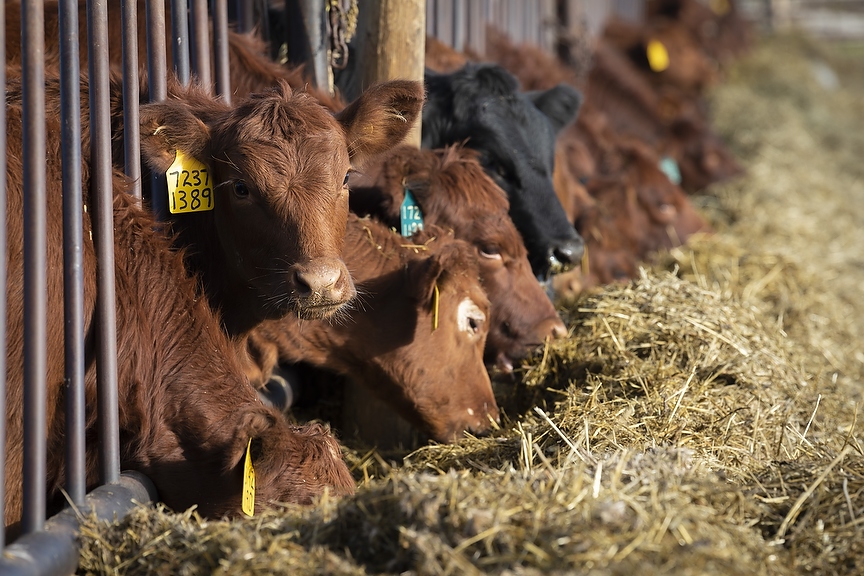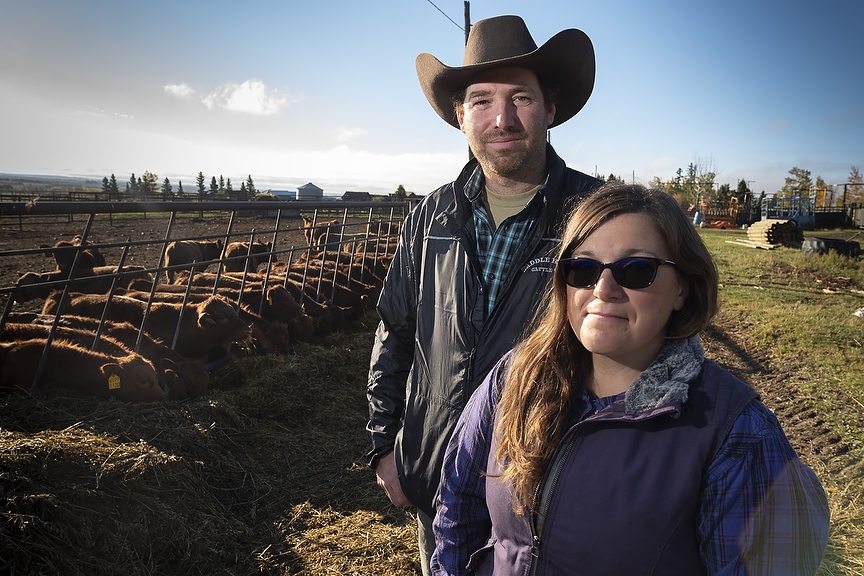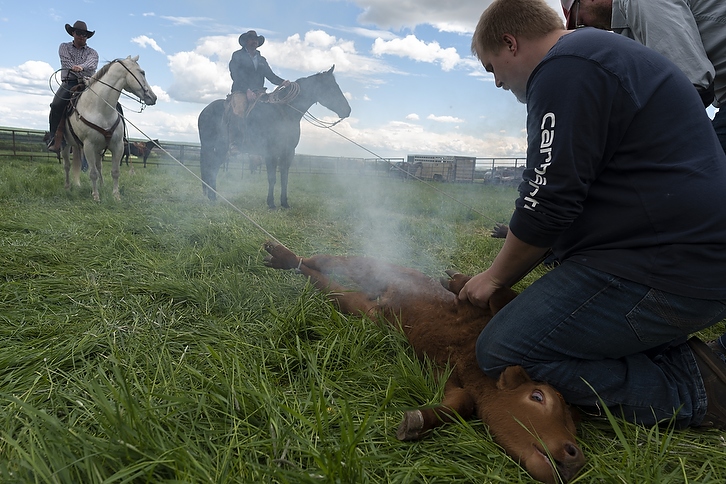
One local county cattle producer is reaching out to the province to speak on behalf of Peace Country providers regarding overwinter funding.
Andrea Conrad, who operates Saddle Hills Cattle Company outside of La Glace, has penned a letter to Premier Danielle Smith, MLA Grande Prairie-Wapiti Ron Wiebe, MP Grande Prairie-Mackenzie Chris Warkentin and Alberta Minister of Agriculture and Irrigation RJ Sigurdson regarding what she considers deficiencies in AgriRecovery 2023, a federal/provincial program to assist producers in recovering extraordinary costs following natural disaster.
According to the Agriculture Financial Services Corporation, eligible livestock producers must be located in specified municipalities and have altered their usual grazing practices due to drought conditions for more than 21 days in 2023.
Eligible producers could access up to $150 per head to help maintain the breeding herd in drought regions.
Conrad, who farms with her husband Cody, has over 440 heads of cattle and 400 feeder calves on her La Glace farm, which runs on approximately 4,000 acres.

Producers in the County of Grande Prairie were not eligible for AgriRecovery dollars because the county did not have the sufficient moisture deficit to qualify. This has left cattle producers in the county in the lurch following a season heavily affected by drought, smoke and grasshoppers, Conrad said.
“We were faced with a very tough and challenging year,” she said.
“Cut worms and grasshoppers pretty much ate all the pasture hay, and with all the smoke and what have you in May and June and April, nothing germinated or grew for the pastures.”
Conrad said the farm has only seen a quarter of its regular hay crop this year.
When a similar program was rolled out to producers in 2021, County of Grande Prairie producers were deemed eligible for the program, Conrad said; said she received $94 per breeding animal in a first payment in October 2021, followed by a second payment of $106 for breeding females, which was paid out in January of 2022.
However, in 2021 Conrad said there were no geographical requirements to be eligible for the program; this year, as the initiative is designed to only address dry conditions, eligible regions were determined using the Canadian Drought Monitor, supplemented by data from the Agriculture Financial Services Corporation (AFSC) network of weather stations.
Birch Hills County, Saddle Hills County and the MD of Spirit River were eligible for the program in 2023.
Conrad said weather can vary heavily between weather stations.
“The weather thing kind of upset me because like 14 kilometres to the east of us, they got far more rain than we did. We missed all the showers and stuff,” she said.
“I don’t think the feds understand that we try to develop feed caches, and their understanding of how we do that is pretty weak.”
Conrad said some producers will be forced to sell their herds or to pay extraordinary feed costs.
“Hay bales are sitting at between $160 to $180 a bale. There’s just no way a guy can pencil in that cost,” she said.
“I think our barley is sitting around like $625 to $650 a bushel, so that’s what we’re feeding our cows.
“In many ways, the AgriRecovery program would have helped those producers making those tough decisions.”

Cattle communiciation
Conrad has submitted a letter with her concerns to Premier Danielle Smith, MLA Grande Prairie-Wapiti Ron Wiebe, MP Grande Prairie-Mackenzie Chris Warkentin and Alberta Minister of Agriculture and Irrigation RJ Sigurdson and shared it to social media.
Communication has been a key issue, she said.
“There are producers that just weren’t aware that we weren’t eligible until they went to apply,” she said.
“The more producers I talked to, the more people had no idea we’d been excluded.”
In her letter, Conrad describes the decision to leave local producers out of the AgriRecovery program as a “proverbial nail in the coffin” to producers.
“In no way, shape or form is anyone looking for a handout, but if you’re going to roll out a program, make it work for all the producers.”
Conrad said she had heard “rumblings” of potential provincial aid, although at this time nothing concrete has been confirmed.
“Cow-calf business is tough. Our margins are so slim. Luckily this fall the culls were worth more money than they have been, so that will help carry us over.
“That’s good, because we are seeing pretty good calf prices.
“It was definitely an interesting year. I hope 2024 is better.”